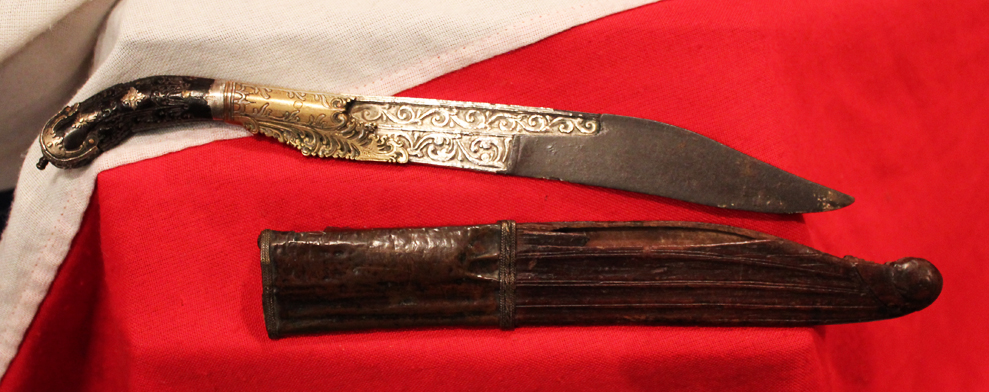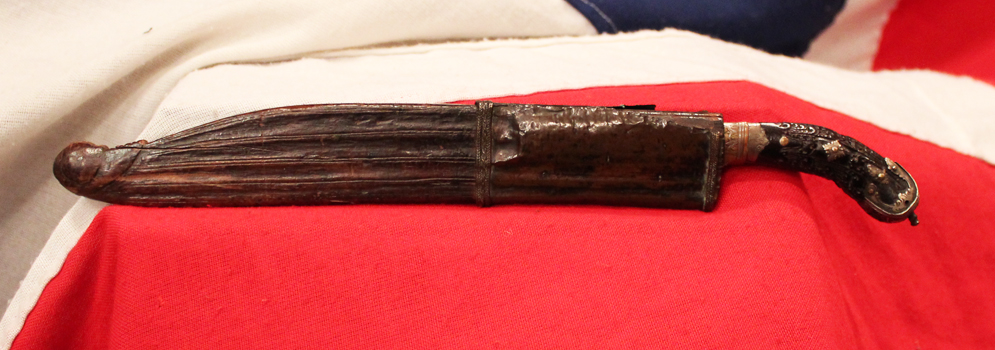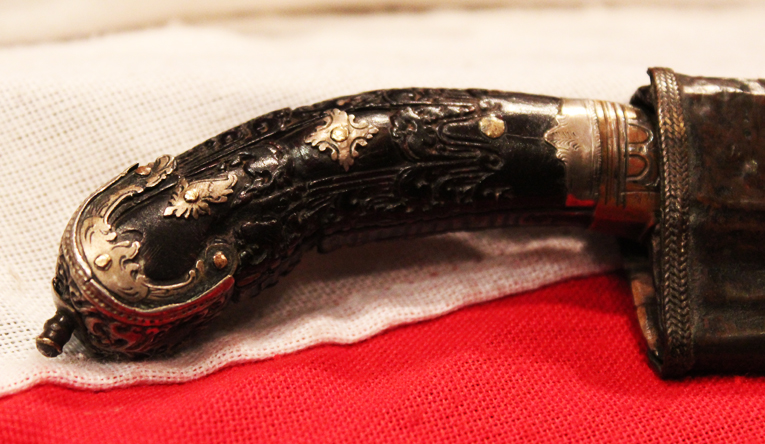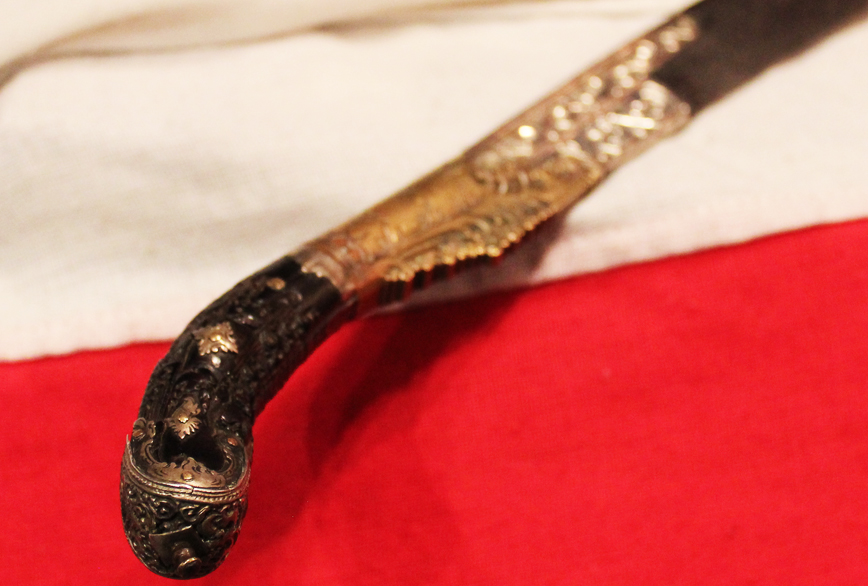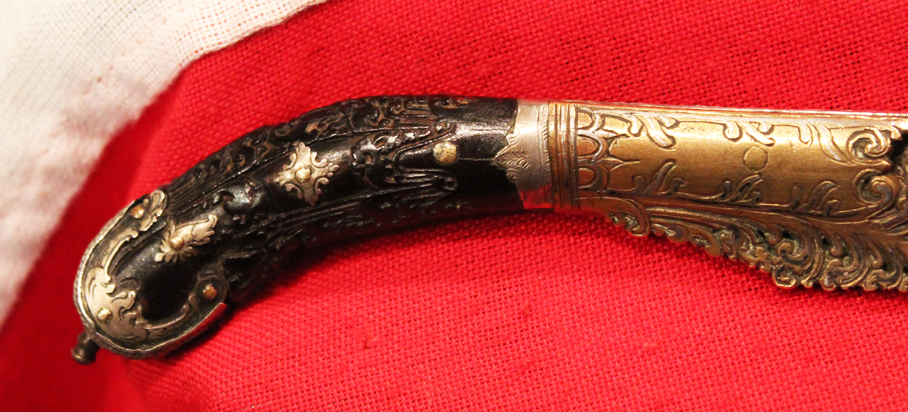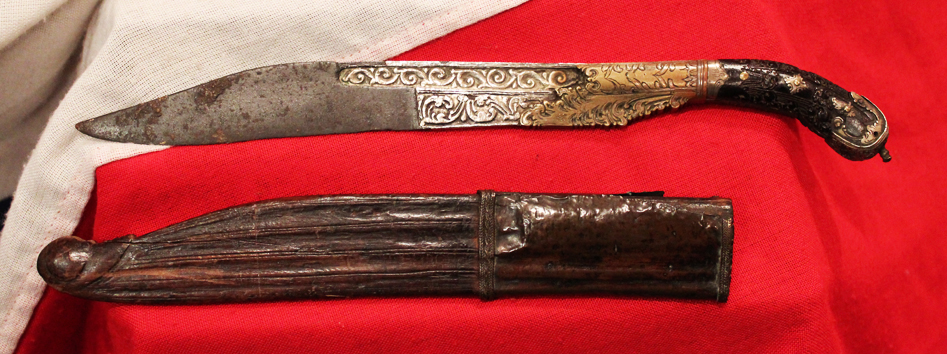Antique 17th-18th century Sinhalese Nobleman's Dagger Piha Kaetta, With Fabulous Carved Black Coral Grip, and Very Unually With its Original Scabbard.
A single edged robust steel blade with fuller along the back edge. The forte and spine of the blade are heavily encrusted in silver with scrolling foliage, encased on each side with chased silver alloy bolster panels, over the base, decorated with finely chased floral and vine scrolling foliage, with finely carved black coral grip.The hilt is finely carved and detailed with aliya-pata pattern hilt. The end is encased in a broad rounding of metal that has been chased in high relief with particularly fine Ceylonese scrolling foliage and flower motifs. From this is emitted a rounded tang button. In its wood scabbard with fluted finish and small wood part lacking.
These elaborately decorated knives are usually the product of the Pattal-hatara (four workshops), the blades being supplied by smiths. This was a mainly hereditary corporation of the best craftsmen who worked exclusively for the king in Kandy. Originally there was only one pattala but this was subsequently divided into sections which included a Randaku pattala (golden sword armoury or workshop). As well as being worn by courtiers, these knives were given by the king to nobles and to the temples. "The best of the higher craftsmen (gold and silversmiths, painters, and ivory carvers, etc.) working immediately for the king formed a close, largely hereditary, corporation of craftsmen called the Pattal-hatara (Four Workshops). They were named as follows; The Ran Kadu Golden Arms, the Abarana Regalia, the Sinhasana Lion Throne, and the Otunu Crown these men worked only for the King, unless by his express permission (though, of course, their sons or pupils might do otherwise); they were liable to be continually engaged in Kandy, while the Kottal-badda men were divided into relays, serving by turns in Kandy for periods of two months.
A related but less ornate example but without a scabbard currently is on display in London’s Victoria & Albert Museum. Another example is in the Clive Collection (see Archer, 1987, p. 45 for an illustration.). The Clive example was first mentioned in inventories in 1775.
References
Caravana, J. et al, Rites of Power: Oriental Weapons: Collection of Jorge Caravana, Caleidoscopio, 2010.
Hales, R.,
Islamic and Oriental Arms and Armour: A Lifetime’s Passion, Robert Hale CI Ltd, 2013.
De Silva, P.H.D.H & S. Wickramasinghe,
Ancient Swords, Daggers & Knives in Sri Lankan Museums, Sri Lanka National Museums, 2006.
Weereratne, N.,
Visions of an Island: Rare works from Sri Lanka in the Christopher Ondaatje Collection, Harper Collins, 1999.
Code: 20007
1395.00 GBP

